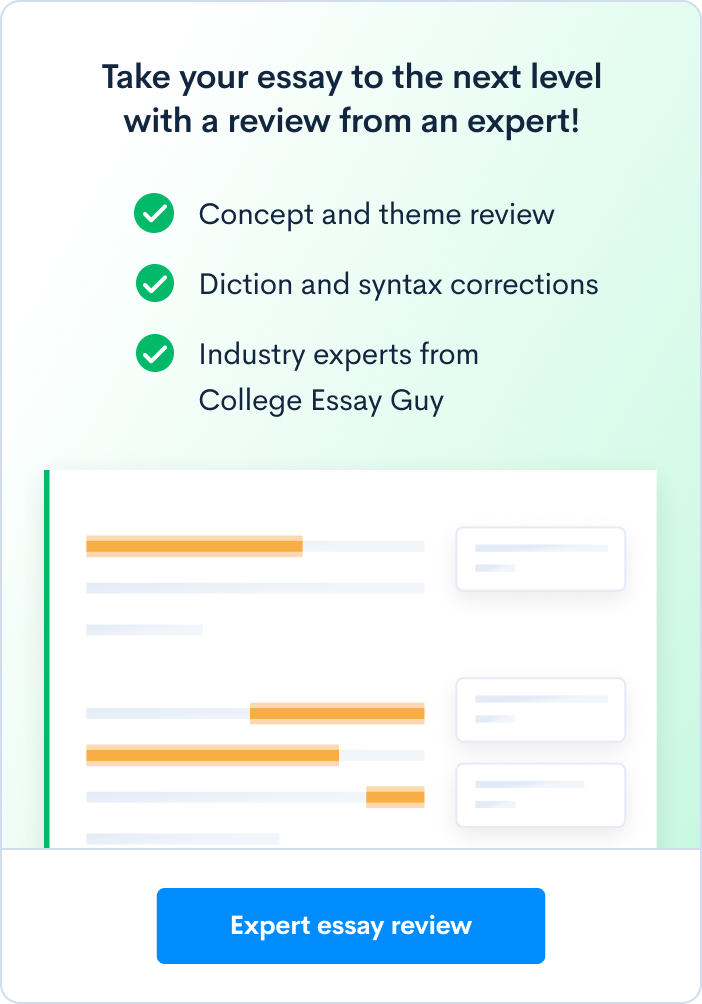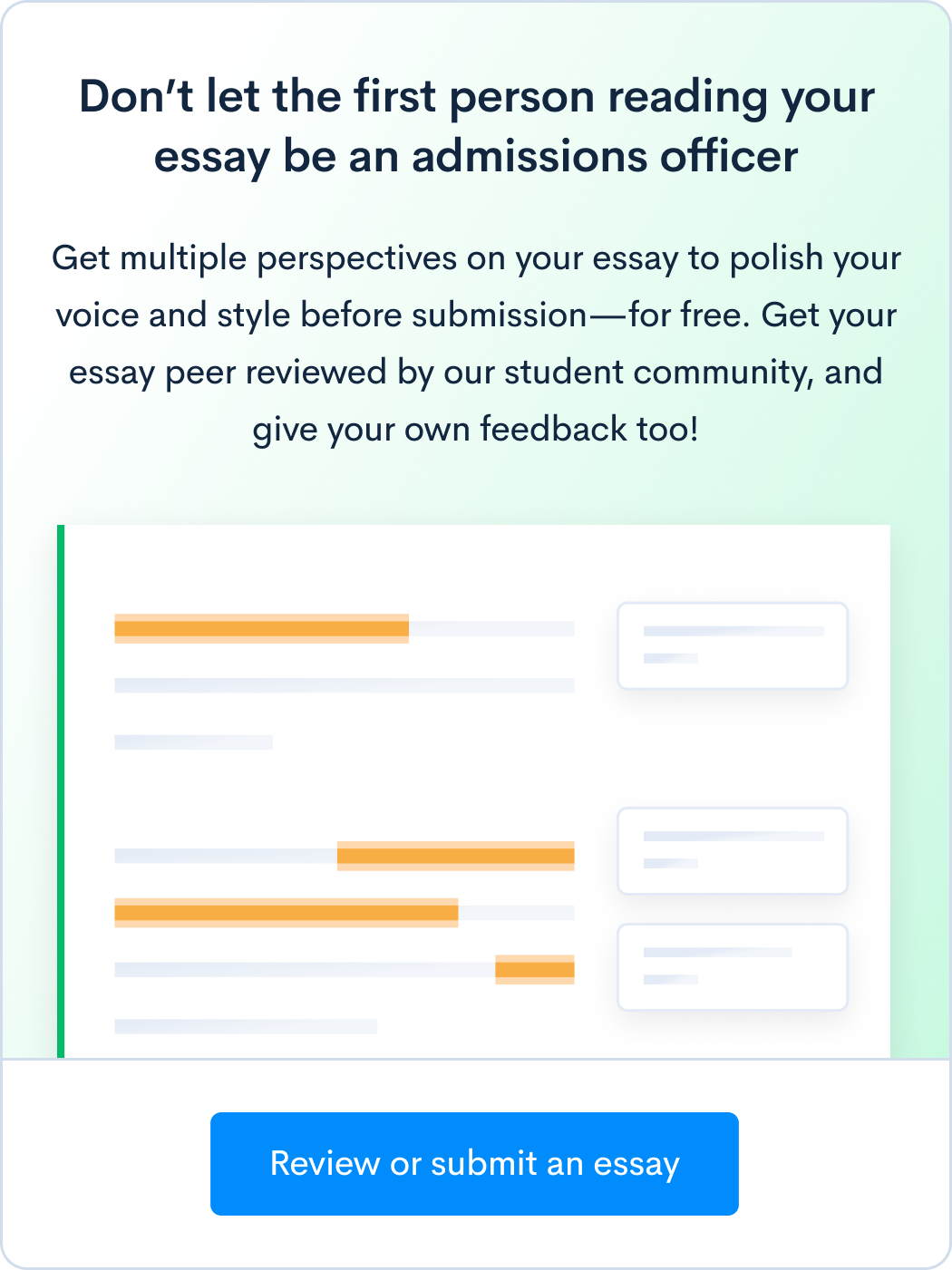How to Write Tufts University Supplement Essays 2018-2019
Founded in 1852, Tufts University is a private institution with a total enrollment of 5,508. Located only 5 miles from the city hub of Boston, Tufts has the appeal of being a suburban campus with close urban proximity. Tufts ranked #29 in U.S. News & World Report’s 2018 edition of Best National Universities and maintains a freshman retention rate of 97%, an indicator of student satisfaction at the school.
Although Tufts is known for its Engineering, Biological and Biomedical Sciences departments, students can choose from over 70 undergraduate majors. Tufts has a student-to-faculty ratio of 9:1, and 67.5% of its classes have fewer than 20 students.
Tufts operations are supported by a $1.6 billion endowment, which helps it maintain an excellent array of study-abroad programs. It also offers a variety of campus services such as the Women’s Center (an institution that offers counseling and information on intersectional feminism, gender identity, and other gender-related issues), academic tutoring (on subject, writing, time-management, and oral communication), and health services (an on-campus health care site that offers walk-in appointments).
With strong programs and resources, Tufts has seen an increase in applications. For the class of 2022, Tufts received 21,502 applications with an 14.6% acceptance rate. Karen Richardson, dean of undergraduate admissions and enrollment management, commented on the class of 2022 to the Tufts Daily: “Admissions has become more competitive in the past few years here at Tufts and at every other highly selective institution. One of the main reasons is that application numbers continue to increase.”
If you hope to join this community of committed, engaged scholars and future leaders, the CollegeVine Essay Team is here to break down how to approach each prompt.
Want to learn what Tufts University will actually cost you based on your income? And how long your application to the school should take? Here’s what every student considering Tufts University needs to know.
Tufts University Application Essay Prompts
All applicants to Tufts University must answer supplemental essay questions. We will break down each of these prompts to help you optimize your answers. Here are Tuft’s instructions:
Think outside the box as you answer the following questions. Take a risk and go somewhere unexpected. Be serious if the moment calls for it, but feel comfortable being playful if that suits you, too.
Applicants to the School of Arts and Sciences, School of Engineering, and 5-Year Tufts/NEC Combined Degree answer the following two questions:
-
What excites you about Tufts’ intellectually playful community? In short, “Why Tufts?” (200-250 words)
-
Now we’d like to know a little more about you. Please respond to one of the following two questions. (200-250 words)
-
Whether you’ve built blanket forts or circuit boards, created slam poetry or mixed media installations, tell us: What have you invented, engineered, produced, or designed? Or what do you hope to?
-
Our Experimental College encourages current students to develop and teach a class for the Tufts community. Previous classes have included those based on personal interests, current events, and more. What would you teach and why?
-
These prompts give Tufts a chance to learn about you and who you will be on campus. Because these prompts are specific to Tufts, they highlight what Tufts wants in their students.
Each of these essays also have a word limit of 250 words, which means that you will need to be concise and to the point. Tufts wants to know as much about the different sides of you as possible in a short amount of time. So don’t waste your words talking about the same parts of yourself, either in your two supplement essays or in your Common App essay.
A note on picking prompts: don’t just pick the prompt you think they want you to answer, pick the prompt that will showcase the best parts of yourself. These prompts are very personal and offer a lot of room for self-expression. Do not abuse this opportunity in a blatant attempt to stand out by trying to be “edgy” or “uncouth” for shock value. At the end of the day, your goal is not to just stand out, but to convince the reader that you will be a positive addition to the Tufts campus community.
Prompt 1: What excites you about Tufts’ intellectually playful community? In short, “Why Tufts?” (200-250 words)
A “Why” essay is your chance to establish that you would be a great match for Tufts. There are two parts of this prompt: the obvious “Why Tufts?” and the subtler “Why you?”. It’s important to establish and connect both aspects of this question.
As mentioned above, “the admissions team was impressed by what applicants could bring to the Tufts campus.” This question is your chance to demonstrate what you will bring to campus. Imagine yourself as the missing puzzle piece in the Tufts community and describe both yourself, the piece, and how you fit into Tufts, the puzzle.
It’s really important that you’re incredibly specific on the “Why Tufts?” aspect of this question: think about what makes Tufts different from the other schools that you’re applying to. If you can replace “Tufts” with the name of any other university, your essay isn’t specific enough!
For example, Tufts works to promote interdisciplinary learning on campus. However, simply saying “I am excited by the potential to explore interdisciplinary learning at Tufts” is not sufficient. Instead, you could mention specific majors, such as International Relations, Peace and Justice Studies, and Engineering Psychology, which span multiple departments.
Instead of just mentioning “interdisciplinary learning,” these programs highlight Tuft’s dedication to exploring subject areas from various perspectives and disciplines. If you’re interested in a nontraditional major, Tufts also has a major in Interdisciplinary Studies. These programs give you a great opportunity to talk about your own academic interests and how Tufts would be the perfect place for you the pursue your passions.
Prompt 2A: Whether you’ve built blanket forts or circuit boards, created slam poetry or mixed media installations, tell us: What have you invented, engineered, produced, or designed? Or what do you hope to?
There are two approaches you can take when answering this prompt: discussing your future aspirations or your past experiences. No matter which prompt you chose, don’t focus too much on the “what.” While it is important to convey to the reader what it is that you have done, it is much more important to express what that says about you. Whether your past creations have shaped your life philosophy or your future plans inspire you to change the world, it is much more important to share an interesting and previously undiscovered part of yourself with the reader.
If you have a concrete idea of what you want to do in the future, discuss how Tufts will help you reach that goal. Whether it’s a specific professor, program, or course that’s going to help you on your way, Tufts could be the perfect place for you to start the future that you envision. Of course, this prompt should more than just another answer to “Why Tufts?” Spend some time reflecting on why your envisioned future is so appealing to you. Do you have a backstory that inspires you to work for a better future for yourself and those around you? Do you see a problem in this world that you can uniquely solve?
A word of warning: Try to avoid attributing your motivation to politically incorrect desires for fame or wealth. Tufts wants to create a community of students who will better the world, not students who are on a quest for wealth and power. Think about your deeper motivations, and use anecdotes to “show, not tell.”
This prompt also provides an opportunity to share any accomplishments that you are especially proud of. Whether it’s a robot that won a large competition or a painting that made someone very happy, extrapolate from this experience to share something unique about yourself. What did you learn from these experiences beyond just the act of creation? Did you learn about working on a team or overcoming challenges from robotics? Did your art inspire introspections on creativity and the impact of art on others? Again, what you chose to talk about isn’t as important as how you connect it to yourself.
Prompt 2B: Our Experimental College encourages current students to develop and teach a class for the Tufts community. Previous classes have included those based on personal interests, current events, and more. What would you teach and why?
This question is your opportunity to showcase your interests and creativity. As Tufts instructed in its prompts, “Think outside the box as you answer the following questions. Take a risk and go somewhere unexpected. Be serious if the moment calls for it, but feel comfortable being playful if that suits you, too.”
As a high school student, you can’t possibly be an expert in any one subject field, so “Introduction to Economics” or “Statistics 101” is probably not the best choice. If you are very interested in economics or math, think about what unique perspective you could share with the Tufts community. If you love sports, maybe consider the economics of free agents in the NFL or the antagonistic between statistics and common practices in the NHL. Consider the intersection between your hobbies (e.g. sports) and your academic interests (e.g. economics).
Of course, this question has a lot of creativity, and you don’t necessarily have to create a purely academic class. Perhaps you have a unique hobby like scrapbooking or debate that you want to share with your community. If these hobbies taught you something important about yourself or the world around you, this question could give you an opportunity to share a little bit of your life philosophy, beyond just academics.
You could also use this prompt to discuss an issue that you care deeply about. Maybe you are concerned by public attitudes towards mental health or representation in media. If you think people need to better understand an issue before forming opinions, this course could be your opportunity to share your belief in the importance of a well-informed public.
Of course, the most important part of this question is “why?” It’s not merely enough to come up with a creative class that you think will stand out to the reader. You need to connect the class to yourself, because you want the reader to remember you, not just the class you came up with.
BFA+BA/BS Program Prompts
Because the BFA + BA/BS Program is a specialized program, it also requires specialized prompts. These prompts are incredibly important because they give the BFA+BA/BS Program a chance to learn about your motivations for applying to this program and how you might utilize the opportunities of the program.
Applicants to the BFA or 5-Year BFA+BA/BS Combined Degree at the SMFA at Tufts answer the following two questions:
-
Which aspects of the Tufts curriculum or undergraduate experience prompt your application? Why SMFA at Tufts? (200-250 words)
-
Art has the power to disrupt our preconceptions, shape public discourse, and imagine new ways of being in the world. Whether you think of Ai Weiwei’s work reframing the refugee crisis, Kehinde Wiley and Amy Sherald’s portraits of the Obamas reimagining portrait painting on a national scale, or Yayoi Kusama’s fanciful Infinity Mirrors rekindling our sense of wonder, it is clear that contemporary art is driven by ideas. What are the ideas you’d like to explore in your work? (200-250 words)
BFA+BA/BS Prompt 1: Which aspects of the Tufts curriculum or undergraduate experience prompt your application? Why SMFA at Tufts? (200-250 words)
This prompt is really an extension of the “Why Tufts” prompts. However, because you’re applying to a specialized program, this prompt is even more important. Make sure you’re specific to the SMFA program at Tufts and not just combined BFA+BA/BS programs in general. The requirements of the program are a really good starting point, because they demonstrate Tuft’s priorities of interdisciplinary learning.
Again, connect the SMFA program to yourself, explaining how your academic and artistic interests overlap and intersect. For example, your interest in Surrealist literature has spread into a usage of surrealist techniques in your art. Or maybe you’re fascinated by the complex relationship between colonialism and nationalism and explore it through your art. Make sure to establish that both parts of this dual program are important to you: the BFA and the BS/BA!
BFA+BA/BS Prompt 2: Art has the power to disrupt our preconceptions, shape public discourse, and imagine new ways of being in the world. Whether you think of Ai Weiwei’s work reframing the refugee crisis, Kehinde Wiley and Amy Sherald’s portraits of the Obamas reimagining portrait painting on a national scale, or Yayoi Kusama’s fanciful Infinity Mirrors rekindling our sense of wonder, it is clear that contemporary art is driven by ideas. What are the ideas you’d like to explore in your work? (200-250 words)
The SMFA program requires an incredibly motivated student, as the workload is incredibly intense because you are simultaneously pursuing two degrees. The difficulty of the program is obvious in the “Week in the Life of a Combined Degree Student.” As such, this question is Tuft’s way of making sure that you are driven enough to keep up with the work required to pursue the BFA degree.
This is your chance to really discuss your art and what you enjoy exploring. When you’re applying for this program, you will be submitting an art portfolio. This prompt gives you the opportunity to share with the reader the meaning of your artwork. What ideas did you explore? What ideas will you continue to pursue?
Want help with your college essays to improve your admissions chances? Sign up for your free CollegeVine account and get access to our essay guides and courses. You can also get your essay peer-reviewed and improve your own writing skills by reviewing other students’ essays.







